By Su Zhong (Laosu), An Xiaopeng (Xiaoping), and Gao Can of AliResearch
On October 28, 2021, Facebook (Facebook, Inc.), a global Internet social media giant, announced that it would change its name to Meta (Meta Platforms, Inc.) and focus on establishing the Metaverse. The concept of the Metaverse instantly went viral, and major technology companies followed up and launched technological development plans. The media fueled the flames and carried out overwhelming publicity.
While the public focuses on the 2C (consumer market-oriented) Metaverse scenarios, such as gaming, social networking, and entertainment, the development of technologies related to the Metaverse will have a revolutionary impact on the 2B (enterprise market-oriented) market. China is upgrading itself from a manufacturer of quantity to a manufacturer of quality. It may need to pay more attention to possible industrial revolutions brought by the application of the Metaverse technology in industrial informatization.
At the same time, the growth of technology, including the Metaverse, will constantly change our lives, the business world, and the way of social governance. In the contemporary era when technologies are popularized on a large scale, we should consider issues between technology and people, especially those about how to prevent the negative impact of technology on people and society in advance and how to transform the power of technology into more useful value for people. As far as the Metaverse, we need to think soberly about the hot topic and discuss how the development of the Metaverse technology can be more inclusive and responsible through multiple angles.
According to the description of Second Life on Wikipedia, “Second Life is an online multimedia platform that allows people to create an avatar for themselves and have a second life in an online virtual world.” The concept of the Metaverse was popularized almost 20 years ago after the launch of Second Life. If you want to learn about the Metaverse, you start with Second Life.
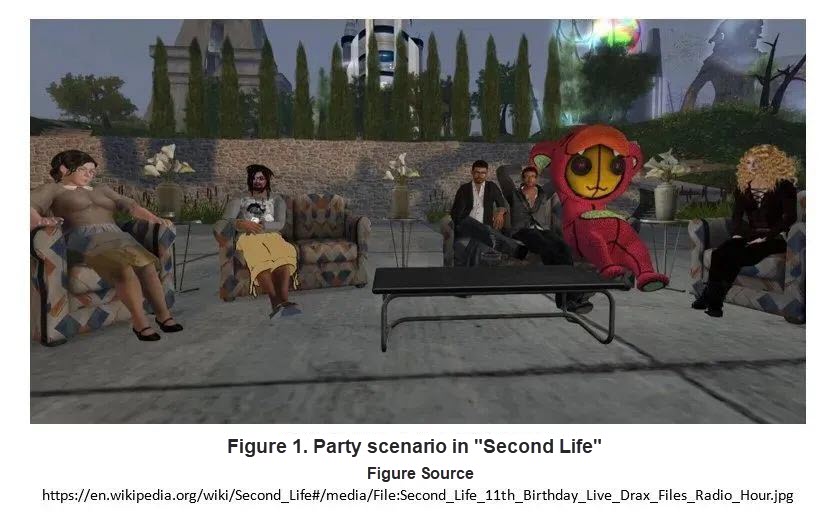
Residents in the Metaverse order designed by Second Life can purchase real estate, create and distribute various digital works on the real estate, and have ownership of the virtual real estate and the created digital works.
Second Life issues a virtual currency called the Linden Dollar (L$) to trade digital works. Linden Dollars can be exchanged for US dollars at dynamic exchange rates in the specially set exchange, LindeX.
Second Life allows enterprise users to create a virtual workplace in a three-dimensional virtual world for communication tasks, such as meetings, activities, and employee training. It can also offer a demonstration center for clients to try out new products. IBM, a technology enterprise, purchased more than ten islands in Second Life and built centers for product training and demonstration.
The governments of Maldives, Sweden, Estonia, Colombia, Serbia, North Macedonia, the Philippines, Albania, Israel, Malta, and other countries have opened embassies in Second Life.
Various art exhibitions, sports competitions, distance education, religious ceremonies, scientific activities, and even riots and demonstrations have appeared in Second Life's virtual world. The press and social media in Second Life have naturally become important mass communication tools in the virtual world.
As a result of its huge business prospects, Second Life appeared on the cover of Business Week in May 2006. The report specifically introduced a millionaire acquiring fortunes by trading in digital commodities in Second Life, which became a new social phenomenon and cross-border trend.
Most of the scenes discussed by the public today have more or less been implemented or experimented with inside Second Life. Since the number of monthly active users broke through the milestone of 1 million in 2013, Second Life has quietly slipped from its peak. Soon after, a new generation of young people turned their social media addiction to Facebook and Instagram. Today, a younger generation has flocked from Facebook to TikTok and Snapchat. Facebook, which has passed its peak and is in trouble, suddenly changed its company name and embraced the Metaverse, making people doubt its true motives. The excitement of the capital market exceeds the science and technology circle. A new investment hotspot is about to emerge. Will the Metaverse become another technology bubble?
On October 29, 1969, a computer at the Stanford Research Institute (SRI) and another computer at the University of California, Los Angeles (UCLA) realized a remote connection using packet switching technology. This is the starting point for the development of computer networks. It was not until the early 1980s that the TCP/IP protocol that constitutes the Internet architecture began to be deployed on a large scale. In 1978, with the gradual extension of computer networks on campus, Multiple User Domain (MUD), an online game whose interface was of pure text, had gradually become popular on university campuses in North America. In the early MUD system, a server was responsible for processing all operations in the virtual world. At that time, the computer terminal still had a text interface. The player used a remote terminal program (such as telnet) to connect to the server to play the online game. The terminal program of the client was responsible for displaying the messages returned by the server and sending commands entered by the player to the server.
In MUD, a player commands a role in the virtual world. The system would output a short piece of text describing the scene where the player was located, and the player would also interact with it by entering text commands. The input and output method of the one-dimensional (1D) byte stream forms the technical basis of the first generation of the Metaverse.
You continue to walk north and finally come to Songshan Mountain. The mountain is green everywhere with lush and thriving trees. In the open space in front of the mountain gate, there is a big tree with a vine hanging from the tree.
The obvious exits here are south and north.The player can enter various commands after the ">" command prompt, such as "go north." The system will also have some hidden commands, such as "pull the vine," to help the player find a treasure chest.
Figure 2 – Interactive Interface of MUD
In the PC era, the continuous enhancement of the computing power in images, graphics, and other aspects allow a computer to render a more complex and realistic virtual world using graphics engines. MUD became graphical and was gradually upgraded into some of the well-known massive multiplayer online role-playing games (MMORPGs), such as Glory of the King and Warcraft.
Before the invention of the term MMORPG, this kind of game was called graphical MUD. The first-generation game designers of MMORPGs were mostly derived from MUD developers or players, such as Brian Green (the developer of Meridian59, the first three-dimensional MMORPG), Raph Koster (Chief Creative Officer of Sony Online Entertainment), and Brad McQuaid (a major designer of EverQuest). Soon after, Second Life appeared, which was an MMORPG platform without story scripts. Players have realized the use of mouse and keyboard to achieve 2D interaction with the virtual world using the rendering ability brought about by the development of computer graphics technology.
The continuous development and maturity of Augmented Reality (AR) and Virtual Reality (VR) and the new generation of human-computer interaction technology have built a bridge between the digital and physical worlds. Players realize 3D interaction with the virtual world.
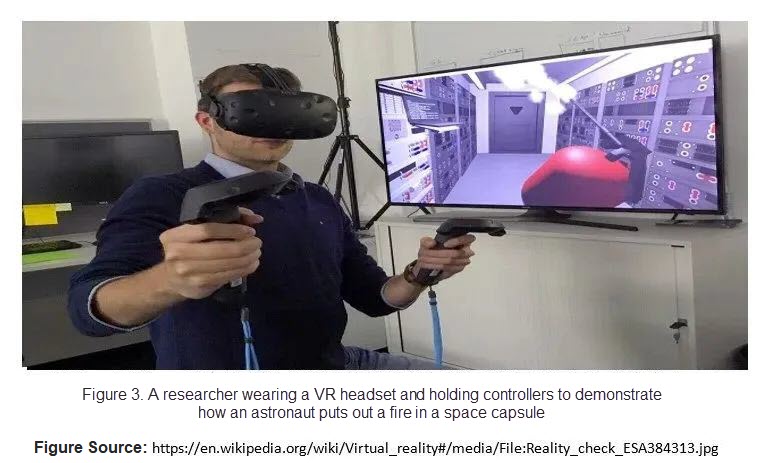
Users can add virtual scenes in the real world with AR technology, such as virtual objects, characters, digital information, and related interactive forms. When shopping, you can browse in a similar interactive way to e-commerce websites, search for discount information on nearby products, seek guidance on shopping routes, and share personal comments on merchants and products. You can take pictures and play with pandas in the virtual world.
People may be more familiar with VR technology compared to AR technology. VR headsets of various brands have been available for ordinary people. VR games for young people appear in shopping malls. VR headsets allow you to transport to a 3D virtual world, attend a live concert being held on the other side of the earth, and travel through time and space instantly to the edge of the solar system. VR is also used for training in many extreme cases, such as scientific research in a crater and maintenance in a space station. Those scenes can be virtualized by a computer or be a combination of virtual and real-world scenes. In the future, expedition members can wear VR headsets and use controllers to remotely control driverless submarines on the seabed to collect ore samples in the Mariana Trench. Surgeons can wear VR headsets to perform remote minimally invasive surgery with surgical robots for astronauts in the space station.
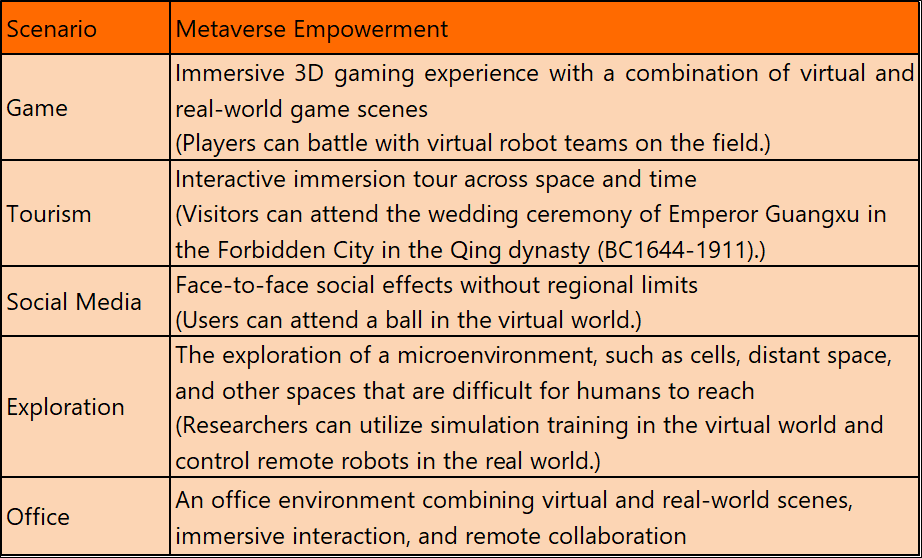
The combination of AR and VR technologies is applied to the Metaverse scenes, which breaks the boundary between the virtual and physical worlds. Combined with robot technology, the interaction between the two worlds is improved to being interoperable, and the two worlds are completely integrated. Under the framework of this generation of
The Metaverse needs strong computing power support from the cloud and the client to realize the combination of virtual and real-world scenes and the interconnection and interoperation of the virtual and physical worlds.
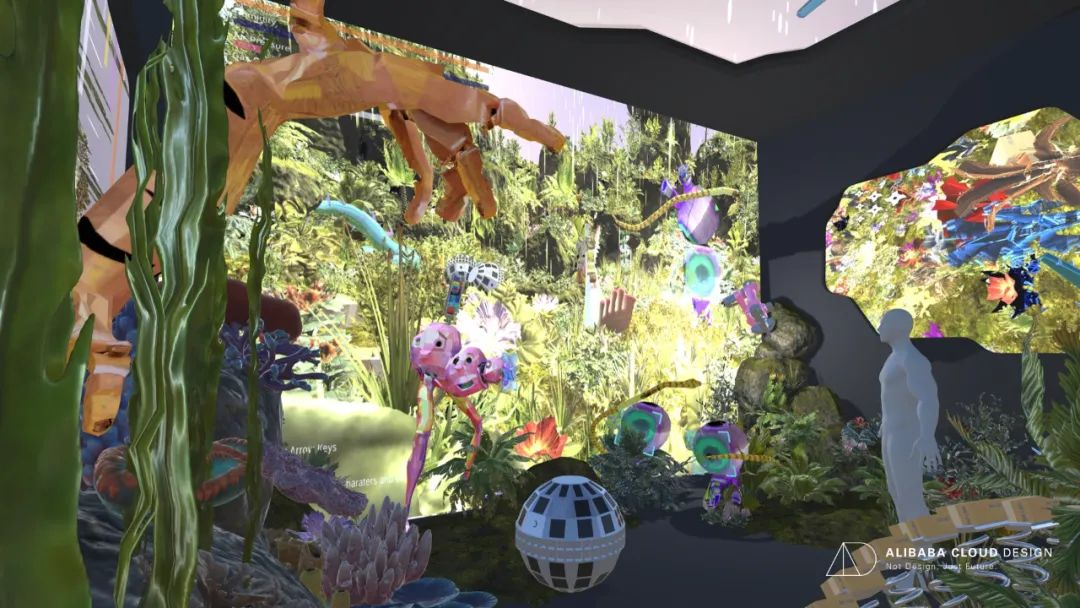
Figure 5 – Use AR technology to reshape art exhibits. Paintings by artists combined with AR technology greatly enhance the interaction between the audience and the paintings, allowing 2D paintings to be stereoscopic in the virtual world.
From the perspective of technology, the new generation of the Metaverse needs to use technology to build the following capabilities in the four layers:
1. The first layer is geometric modeling, which builds geometric models of the world, including objects, characters, scenes, etc. Objects can be operated, and structures can be reassembled.
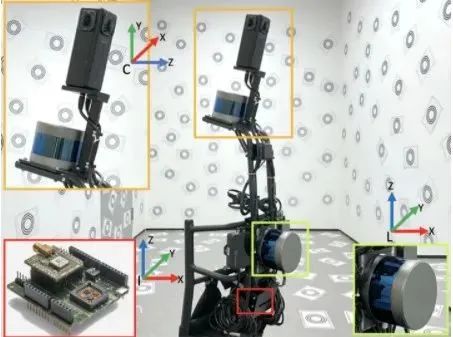
Figure 6 – Mobile Scanning Device for Large-Scale Scenarios
Traditional computer geometry modeling requires the use of CAD software, which consumes huge professional labor costs and has great limits in large-scale use. Combining 2D image data acquisition methods, such as image acquisition, radar scanning, remote sensing photos, etc., 3D geometric reconstruction with computer graphics technology is currently an economically feasible technical solution and has been tried and promoted in many fields.
2. The second layer is simulation, which models dynamic behavior in the virtual world and makes the virtual world active. For example, water should be able to flow low; throwing a stone can break a sheet of glass. A virtual character can respond reasonably to external input. The technical capabilities of the first and second layers build a virtual world together.
It is extremely difficult to achieve the capability of this layer with the current classic computer system. Even if it simulates the simple process of pouring milk into coffee, it needs a huge supercomputer to complete it. Richard P. Feynman, a Nobel laureate in physics and an expert in quantum electrodynamics, gave a very clear assertion in a 1981 article in, “Only quantum computers were able to perfectly solve the problem of simulation in the physical world, while at present classical computers could only do a very simplified approximate simulation of this process.”
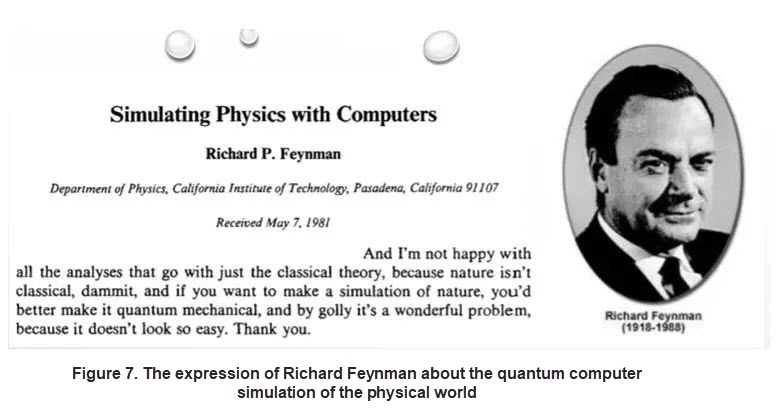
3. The third layer is the virtual-real fusion. The information of the virtual world is superimposed on the real world to display and is integrated with the real world. Any object in the real world is wrapped in a layer of information and presents different content for different users. Personalized recommendations will happen all the time. AR/VR and brain-computer interface are the focus of this layer of technology research.
4. The fourth layer is the virtual-real interaction. The behavior in the virtual world generates feedback in the real world, and the changes in the virtual world are automatically reflected in the real world. Alterations of the virtual world would change the corresponding real world. This depends on robotics. Therefore, simulation and planning can be carried out in the virtual world to find the best solutions, which will be automatically implemented in the real world. Robots in the real world and non-player characters (NPCs) in the virtual world need artificial intelligence technology to support them at the bottom.
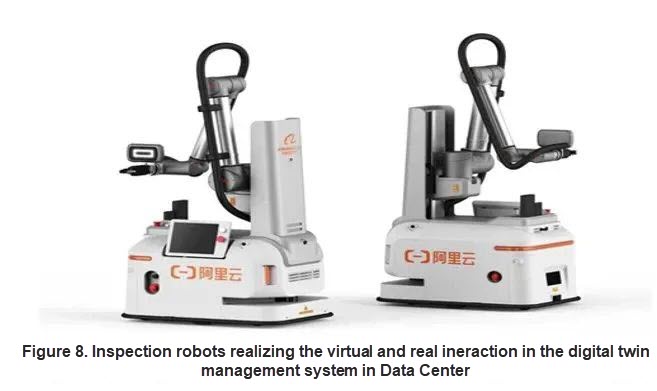
If the technical vision of the 3D Metaverse is turned into reality, many technical difficulties need to be broken through in the first, second, and fourth layers, in addition to the threshold of practical AR/VR technology that needs to be solved in the virtual-real fusion layer. In terms of technology, the brain-computer interface, strong artificial intelligence, quantum computing technology will be required to be broken through. The future of the Metaverse technology will continue the objective rules of technological development and continuously iterate. The road ahead is long.
In this round of heated discussions about the Metaverse, the public mostly focuses on 2C scenarios, such as gaming, social networking, and entertainment. However, the development of the Metaverse technology is more likely to have a revolutionary impact on 2B business scenarios, such as telecommuting, e-commerce, software development, industrial design, intelligent manufacturing, and urban management. The integration of a new generation of industrialization and informatization represented by the Metaverse technology will expand the depth and breadth of the intersection of two important development historical processes of human society. China, which is in the strategic process of transforming itself from a manufacturer of quantity to a manufacturer of quality, urgently needs the Metaverse, which builds and supports the in-depth integration of industrialization and informatization.
The cyber-physical system based on the Metaverse technology integrates advanced technologies, including IoT, robots, AR/VR, new-generation wireless communication, and artificial intelligence, to build a digital twin system with mutual mapping, timely interaction, and efficient collaboration between humans, machines, objects, environment, information, and other elements in physical space and information space. It is expected to realize the on-demand response, rapid iteration, and dynamic optimization of resource allocation and operation within the system. The combination of the Metaverse and intelligent manufacturing technology will give birth to more intelligent technical equipment, collaborative product innovation systems, flexible production modes, intensive resource utilization, and accurate management modes.
Technology is changing business, life, and governance. In the contemporary era, technologies are popularized on a large scale. We are required to consider the issues between technology, people, and society, especially those issues about how to prevent the negative impacts of technology on people and society in advance and how to transform the power of technology into more useful value for people. Only by fully considering the negative effects of science and technology, even catastrophic effects, can we guide ourselves to find solutions and ideas to deal with these negative impacts.
Since the virtual network world and the real world are misplaced twins, is the existing legal system suitable for the virtual world? Does it require a special legal system? In the face of new challenges, we should advocate morality, ethics, education, norms, and behavioral conventions first and use the law to solidify those ideas after exploring some governance experience. The cost of law is very high, so we can use softer means first and then enact laws to confirm related regulations after the development trend is clear. In addition, developers and technology providers need to take responsibility. Both technology providers and system operators should maintain good ethics and take responsibility for creating a positive virtual world.
Technology is neutral, but this round of technological revolution is different from the changes brought about by the power technology of the industrial revolution. In the industrial revolution, human labor is liberated through the transformation of power or machinery, and the physical structure of human society was changed. People used steam engines and mechanical systems to amplify ideas and actions in the system. When an external system can achieve all the features that one's physical ability can achieve, the overall physical strength of human beings will decline. In other words, people's physical ability is reduced through the division of labor brought about by industrial technology, and they work more with the brain. The biggest difference between the industrial revolution and the information revolution is that the latter digitizes people and things. A parallel world of atoms and bits was built in the information revolution, operating on human brains to enhance the perception of human senses and forming a consciousness network of human society.
Regardless of whether the future is based on the Metaverse or virtual reality technologies, after the large-scale popularization of various applications, a large amount of accumulated data will be generated and evolve into powerful intelligent systems or data systems. These systems add up human intelligence to form powerful intelligence. Will the overall level of human intelligence decrease because there is no need to use our brains most of the time?
The Metaverse transcends the existing world, time, and space and creates new digital identities. This system of digital identities may not be important in the existing world, but it can create virtual characters in virtual reality. The virtual characters will get eternal life through the system. Behind these characters with eternal life are various agents and agent machines. Therefore, digital identities and images will be the most important issue discussed in relation to the Metaverse. Other interesting phenomenona include, “Which virtualized gender will people choose in the Metaverse? How will people deal with legal issues involved with the Metaverse? How many virtual images can people have? Since avatars in the Metaverse can exist for a hundred or a thousand years, what will happen to the accumulated data at the end of the intellectual property protection period? These issues related to ethics and privacy need to be discussed in the future.
Alibaba Named a Major Player in Worldwide Commercial CDN by the IDC MarketScape Report

871 posts | 198 followers
FollowAlibaba Cloud Community - April 2, 2022
Alibaba Cloud Community - July 25, 2022
Alibaba Cloud Community - April 8, 2022
Alibaba Cloud Community - December 20, 2021
Alibaba Cloud Community - May 9, 2022
Clouders - June 17, 2022

871 posts | 198 followers
Follow Metaverse Solution
Metaverse Solution
Metaverse is the next generation of the Internet.
Learn More Big Data Consulting for Data Technology Solution
Big Data Consulting for Data Technology Solution
Alibaba Cloud provides big data consulting services to help enterprises leverage advanced data technology.
Learn More VPC
VPC
A virtual private cloud service that provides an isolated cloud network to operate resources in a secure environment.
Learn More ID Verification
ID Verification
A digital ID verification solution to provide highly secure, convenient, and flexible remote ID verification
Learn MoreMore Posts by Alibaba Cloud Community